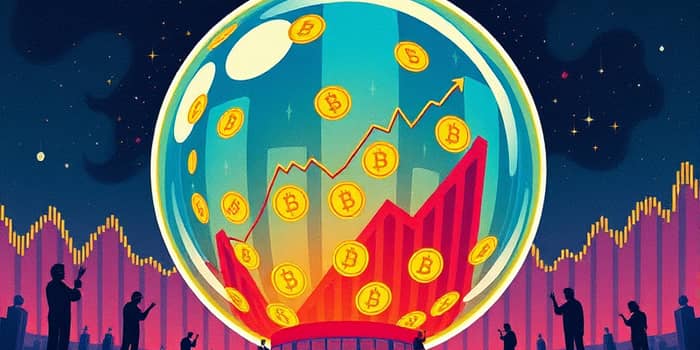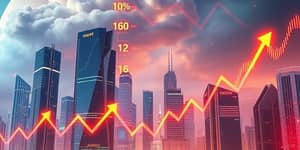
Market bubbles can leave investors reeling when they burst, erasing years of gains in moments. By learning to spot warning signs early, you can build a resilient strategy that weathers volatility.
A market bubble begins with a rapid escalation in asset prices driven by optimism and speculation. As enthusiasm grows, prices climb far above intrinsic values, fueled by excess liquidity and easy credit.
Classic bubble stages include the stealth phase, awareness, mania, and the blow-off top when the bubble bursts. Recognizing each stage helps investors avoid the panic that follows dramatic downturns.
History offers vivid examples of how bubbles form and collapse. The dot-com bubble of the late 1990s saw the NASDAQ P/E ratio soar above 200, only to crash spectacularly in 2000. Similarly, the U.S. housing bubble preceding the 2008 financial crisis was marked by unrealistic belief that real estate always goes up.
More recently, cryptocurrency surges and AI-related stock rallies have drawn comparisons to these past events. Though not every new high signals a bubble, examining data and investor behavior provides valuable context.
Several indicators often flash red simultaneously before a crash:
Financial institutions like UBS highlight eight classic bubble signs, six of which are currently active in AI equities. Monitoring multiple signals increases the likelihood of early detection.
Economists and policy experts use several frameworks to explain bubble formation and guide responses:
Combining these models provides a nuanced view of why bubbles arise and how policy can deflate unsustainable booms before they become catastrophic.
This framework helps investors and regulators track evolving bubble conditions across asset classes, from stocks to real estate and digital tokens.
Housing markets pose distinct difficulties because intrinsic values depend on demographics, supply elasticity, and long-term interest rates. Price bubbles can persist when buyers believe future resale prices always rise.
Key home-bubble metrics include price-to-rent ratios, mortgage credit growth, and affordability indexes. Real-time monitoring tools and local market analysis are essential to spot distortions early.
As of mid-2025, the AI-driven tech sector and certain cryptocurrencies exhibit qualities reminiscent of past bubbles, though full confirmation is pending. Retail-driven trading platforms, zero-commission brokers, and margin accounts have increased market participation dramatically.
Investors can adopt several measures to protect capital and remain grounded in fundamentals:
Consulting financial advisors and using reliable data sources further strengthens your ability to make informed decisions.
Bubbles are often only fully recognized in hindsight, but paying attention to rates significantly above historical benchmarks, liquidity surges, and social sentiment can alert you to brewing imbalances.
By combining quantitative indicators, historical lessons, and a disciplined approach, investors can steer clear of the worst effects when markets heat up. Remember that no single metric suffices; it is the convergence of multiple warning signs that signals true danger.
Armed with knowledge, vigilance, and a long-term perspective, you can transform market uncertainty into opportunity—ensuring your portfolio remains resilient, even when bubbles burst.
References













